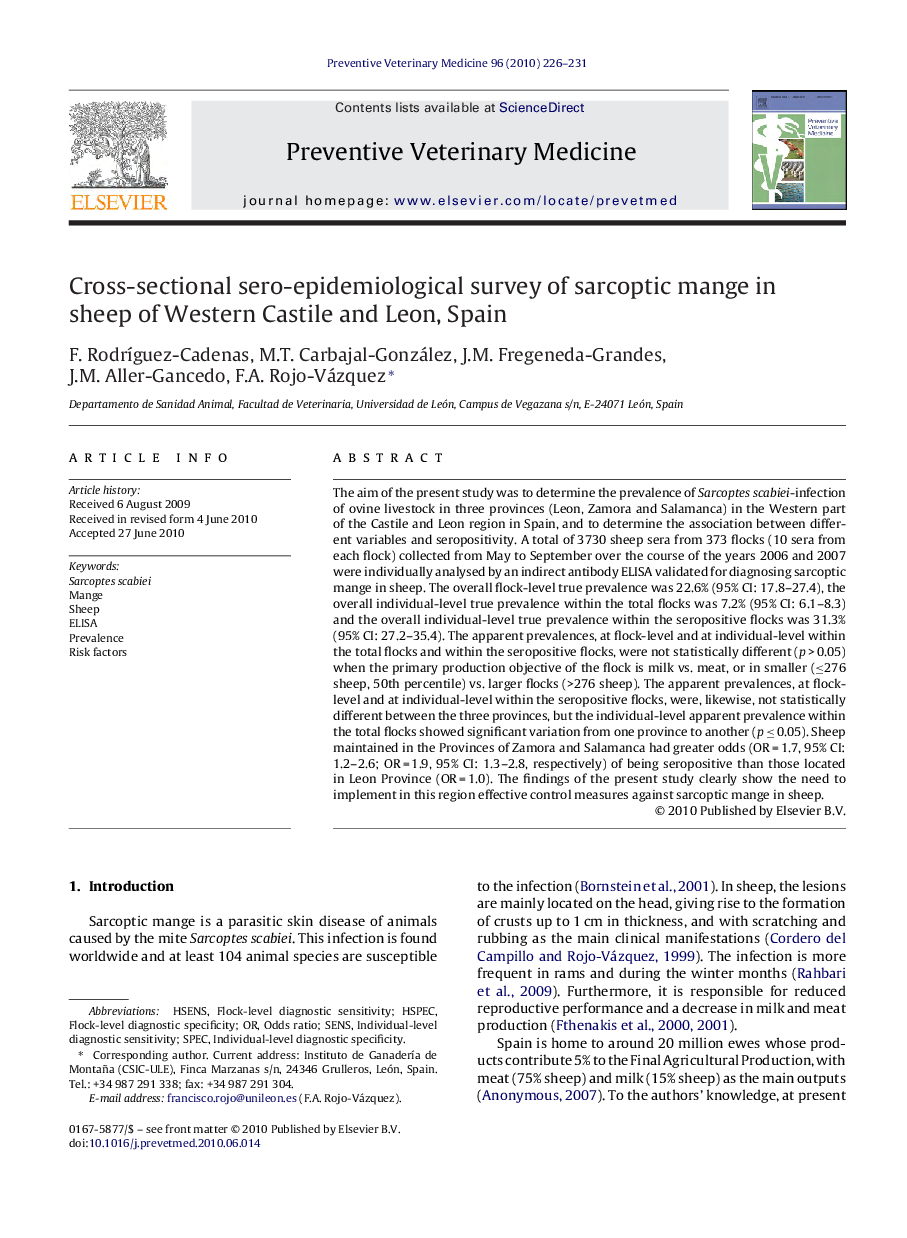| Article ID | Journal | Published Year | Pages | File Type |
|---|---|---|---|---|
| 2453085 | Preventive Veterinary Medicine | 2010 | 6 Pages |
The aim of the present study was to determine the prevalence of Sarcoptes scabiei-infection of ovine livestock in three provinces (Leon, Zamora and Salamanca) in the Western part of the Castile and Leon region in Spain, and to determine the association between different variables and seropositivity. A total of 3730 sheep sera from 373 flocks (10 sera from each flock) collected from May to September over the course of the years 2006 and 2007 were individually analysed by an indirect antibody ELISA validated for diagnosing sarcoptic mange in sheep. The overall flock-level true prevalence was 22.6% (95% CI: 17.8–27.4), the overall individual-level true prevalence within the total flocks was 7.2% (95% CI: 6.1–8.3) and the overall individual-level true prevalence within the seropositive flocks was 31.3% (95% CI: 27.2–35.4). The apparent prevalences, at flock-level and at individual-level within the total flocks and within the seropositive flocks, were not statistically different (p > 0.05) when the primary production objective of the flock is milk vs. meat, or in smaller (≤276 sheep, 50th percentile) vs. larger flocks (>276 sheep). The apparent prevalences, at flock-level and at individual-level within the seropositive flocks, were, likewise, not statistically different between the three provinces, but the individual-level apparent prevalence within the total flocks showed significant variation from one province to another (p ≤ 0.05). Sheep maintained in the Provinces of Zamora and Salamanca had greater odds (OR = 1.7, 95% CI: 1.2–2.6; OR = 1.9, 95% CI: 1.3–2.8, respectively) of being seropositive than those located in Leon Province (OR = 1.0). The findings of the present study clearly show the need to implement in this region effective control measures against sarcoptic mange in sheep.
